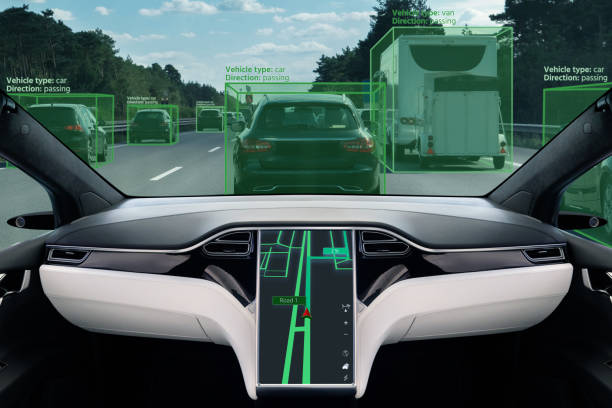The Legal Labyrinth of Autonomous Vehicle Regulation
Introduction: In the rapidly evolving landscape of transportation technology, autonomous vehicles stand at the forefront of innovation. As these self-driving marvels inch closer to widespread adoption, lawmakers and regulators find themselves navigating uncharted legal territory. This article delves into the complex web of regulations surrounding autonomous vehicles, exploring the challenges and opportunities that lie ahead.

Defining Autonomy: The SAE Levels
To effectively regulate autonomous vehicles, it’s crucial to establish a common language for describing their capabilities. The Society of Automotive Engineers (SAE) has developed a widely accepted classification system that defines six levels of driving automation, ranging from Level 0 (no automation) to Level 5 (full automation). This framework has become the foundation for many regulatory discussions and legislative efforts worldwide.
The Patchwork of State Regulations
In the United States, the regulation of autonomous vehicles has largely been left to individual states, resulting in a complex patchwork of laws and guidelines. While some states have embraced the technology with open arms, others have adopted a more cautious approach. This lack of uniformity presents challenges for manufacturers and operators looking to deploy autonomous vehicles across state lines.
Federal Oversight and the SELF DRIVE Act
Recognizing the need for a more cohesive national approach, the U.S. Congress has made efforts to establish federal guidelines for autonomous vehicles. The SELF DRIVE Act, introduced in 2017, aimed to create a unified framework for the testing and deployment of self-driving cars. Although the bill stalled in the Senate, it sparked important discussions about the role of federal oversight in this rapidly evolving field.
Liability and Insurance: Shifting Paradigms
One of the most pressing legal questions surrounding autonomous vehicles concerns liability in the event of an accident. As control shifts from human drivers to AI systems, traditional notions of fault and responsibility become increasingly complex. Insurance companies and legal experts are grappling with new models that account for the unique risks and liabilities associated with self-driving technology.
Data Privacy and Cybersecurity Concerns
Autonomous vehicles generate and process vast amounts of data, raising important questions about privacy and data protection. Regulators must strike a delicate balance between allowing manufacturers to collect the information necessary for safe operation and protecting individuals’ personal information. Additionally, the potential for cyberattacks on connected vehicle systems presents a new frontier in transportation security that demands robust legal safeguards.
International Harmonization Efforts
As autonomous vehicles transcend national borders, there’s a growing recognition of the need for international cooperation in developing regulatory standards. Organizations like the United Nations Economic Commission for Europe (UNECE) are working to establish global technical regulations for automated driving systems, aiming to facilitate cross-border deployment and ensure consistent safety standards worldwide.
Ethical Considerations and Algorithmic Decision-Making
Perhaps the most challenging aspect of regulating autonomous vehicles lies in addressing the ethical dilemmas inherent in their decision-making processes. How should a self-driving car prioritize different lives in an unavoidable accident scenario? Lawmakers and ethicists are grappling with these complex questions, seeking to develop guidelines that balance safety, efficiency, and moral considerations.
The Road Ahead: Adaptive Regulation
As autonomous vehicle technology continues to evolve at a rapid pace, it’s clear that traditional regulatory approaches may struggle to keep up. Many experts advocate for a more flexible, adaptive regulatory framework that can evolve alongside the technology. This could involve regulatory sandboxes, performance-based standards, and ongoing collaboration between lawmakers, industry stakeholders, and the public.
In conclusion, the legal landscape surrounding autonomous vehicles is as complex and dynamic as the technology itself. As we stand on the cusp of a transportation revolution, it’s crucial that our legal and regulatory frameworks evolve to meet the challenges and opportunities presented by self-driving cars. By fostering innovation while prioritizing safety and ethical considerations, we can pave the way for a future where autonomous vehicles seamlessly integrate into our daily lives, transforming the way we think about transportation and mobility.





